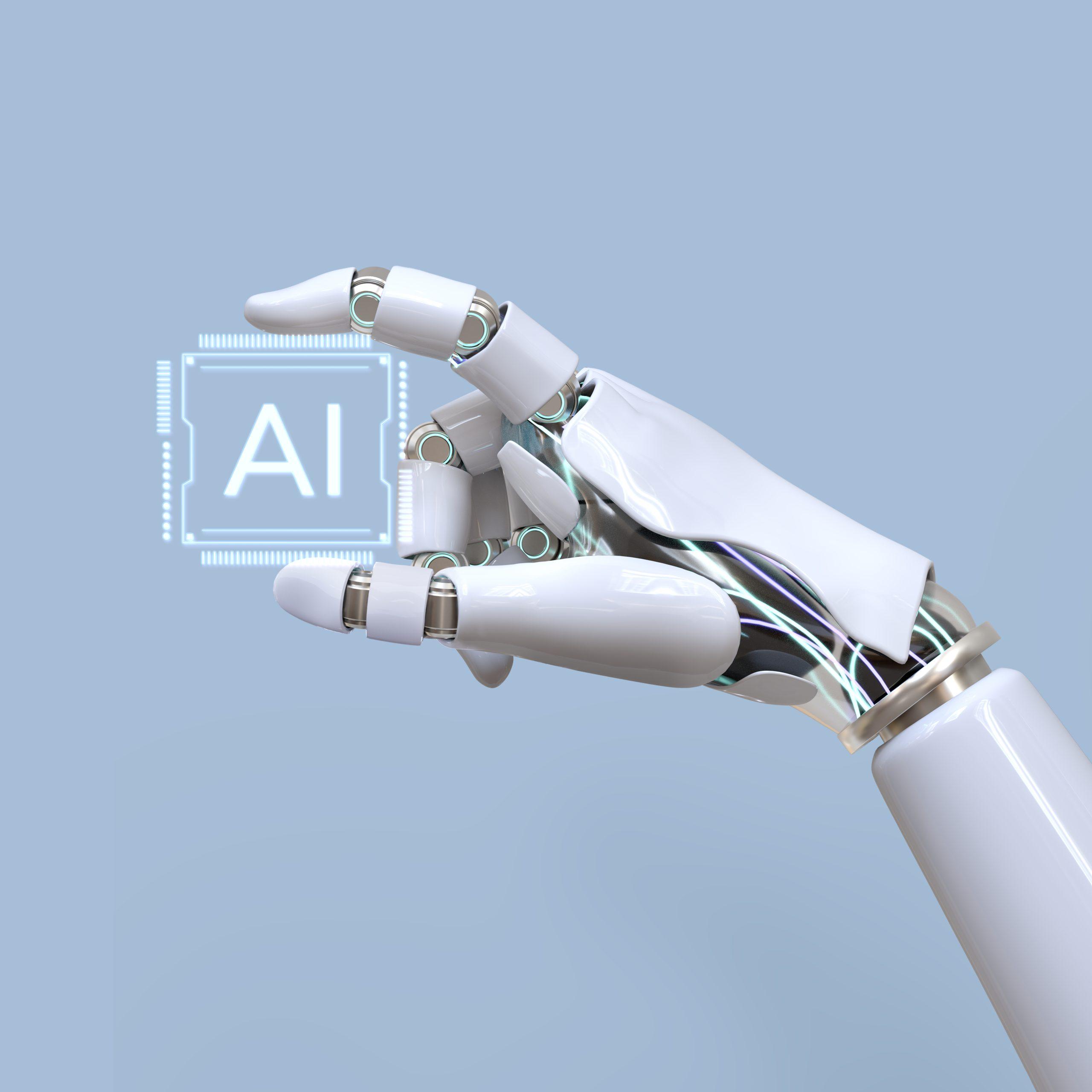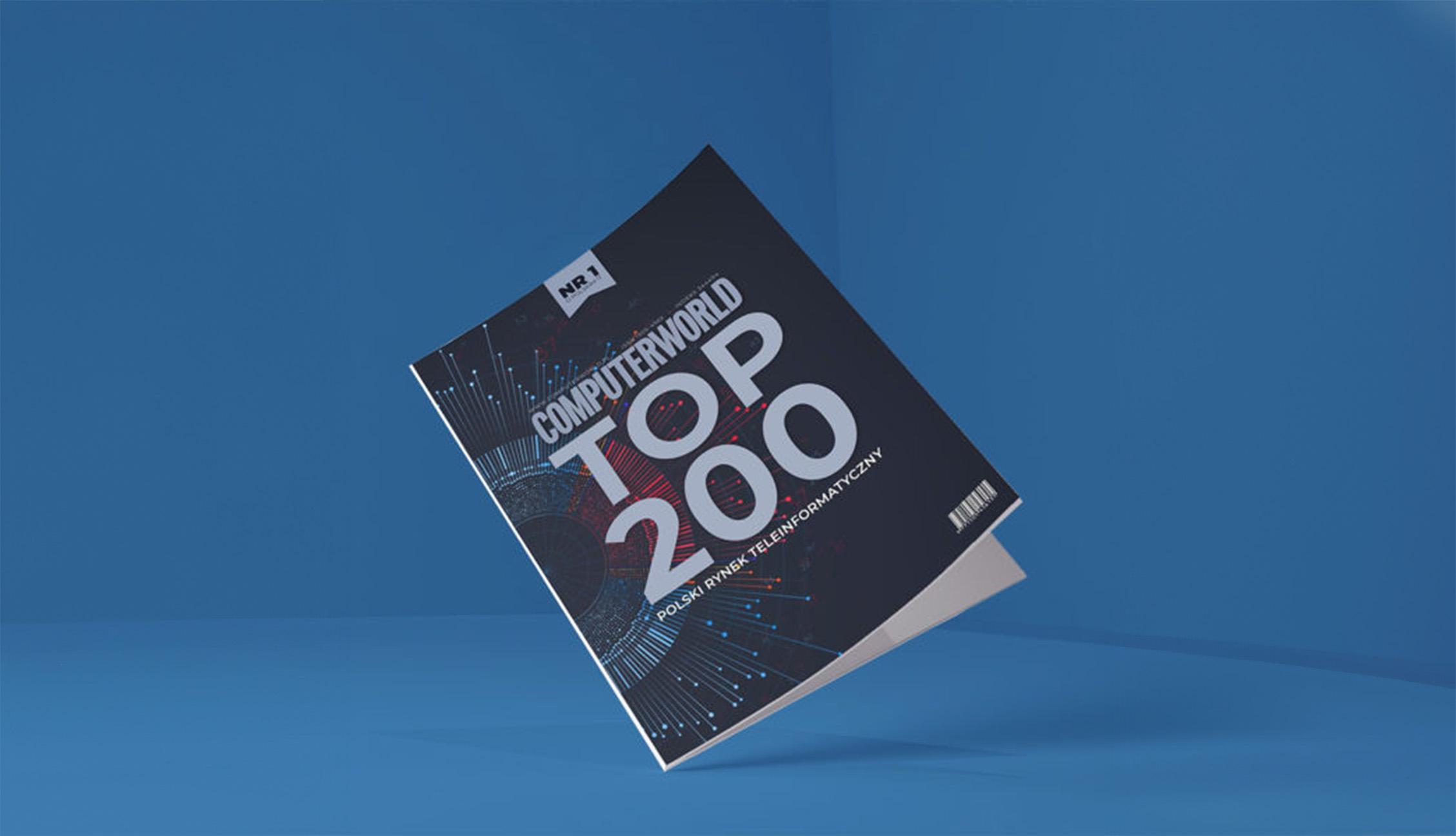The New Year is a time to implement many changes in business and technology. Keeping up with the upcoming trends increases customer engagement and offers a considerable advantage over competitors. What trends are particularly worth paying attention to in the upcoming year 2023?
Software Development
Technological development is gaining momentum each year, focusing on the constant search for new solutions to ensure that data is processed and protected efficiently.
Upcoming trends in software development in 2023 include:
- Adoption of Low Code/No Code based development
As Forbes predicts, “organizations simply cannot spend years trying to get their IT shops in order so that they can compete.” At the same time, anyone with basic programming skills can now develop applications independently, which is particularly valuable for SMEs. However, while low-code/no-code solutions are rapidly gaining popularity due to their speed and ability for any company to get to market quickly, they could be more scalable and flexible when market trends change, and companies need to respond accordingly. Therefore, the demand for custom software development services is still the most valuable option.
- Microservices architecture
Microservices are used to develop various digital solutions, from mobile application development to desktop and web application development to cross-platform application development. In 2023, this trend will continue dominating other software architecture types.
- DevSecOps
Data security continues to be one of the biggest concerns in software development. That’s why more and more companies are turning their attention to the DevSecOps approach. This popular practice requires developers to implement security measures early in the software development lifecycle (SDLC). This ensures that all possible security threats and issues are more effectively addressed early in the software development process.
Fintech
Fintech, or technological innovation in the financial sector, regularly seeks to improve how customers interact with financial companies.
Upcoming Fintech trends in 2023 include:
- AI technology
Artificial intelligence algorithms in financial software are beginning to play a significant role in determining who and how they use various financial services. Its adoption in the fintech industry for credit decision-making, negotiation and fraud will intensify in 2023. However, the public is now raising demands about the ethical implications of artificial intelligence in such critical decision-making processes.
According to a recent survey of IT and business leaders by Deloitte, 86% of those using artificial intelligence in financial services say adopting this technology will be critical to the success of their business in the next two years. One such solution could be the use of voicebots.
- Embedded finance
According to the latest data, searches for the term “embedded finance” have increased by 88% over the past five years. It is nothing more than offering banking, payment or insurance products in a social ecosystem whose core business is yet to be related to the provision of financial services. The success of embedded finance is largely based on distribution, trust and better user experience. In addition, data shows that the term “banking as a service” (BaaS) has grown by 176% worldwide.
- Regtech
Regtech, or regulatory technology, involves information technology to streamline regulatory and compliance processes. The technology helps companies streamline almost every step of the compliance process. Using cloud technology, machine learning and big data analytics, RegTech is improving its solutions so that financial institutions can effectively and accurately identify and prevent risks in the coming years.
Juniper Research predicts that the RegTech industry will grow by 200% between 2022 and 2026.
Energy Industry
Given the high use of fossil fuels, transforming the energy sector may be one of today’s most critical challenges. Some trends could significantly change the way we produce energy.
Upcoming energy industry trends in 2023 include:
- Low-code/no-code tools
More and more companies in Poland are investing in low-code/no-code tools to automate key processes in the organization. According to a Gartner report, the market share of these applications will grow to 70% by 2025. This is a significant increase, considering previous years’ results (25% share by 2020).
Being the creators of the RPA tool – BuzzAutomation – the X-Code company sees a growing interest in Polish solutions that boldly compete with global giants. The said tool responds to the needs of companies that care about digitization and optimization of expenses and processes.
- Digitization – “digital twins”
Using the latest technology, it is possible to create a virtual replica of a power plant or even an entire network, allowing suppliers to model different scenarios, make better decisions and improve efficiency.
- Process automation
The energy market is currently facing quite a challenge. Recent legal changes have made it necessary for energy sellers to prepare their systems for connection to the Central System for Information on the Energy Market (CSIRE). Since 2010, X-Code Sp. z o.o. has been implementing solutions that optimize processes in the energy market – the PWI Router fully automates the process of changing electricity vendors. Currently, the service is used by four leading vendors. Our knowledge of the industry enabled us to create a connector to connect CSIRE with the domain systems of eclectic energy sellers – PWI Router 2.0
E-Commerce
The coronavirus pandemic outbreak caused considerable problems in the supply chain and later offered us rampant inflation. It also gave considerable momentum to the development of online stores. Also, 2023 is preparing many opportunities in this regard.
Upcoming e-commerce trends in 2023 include:
- Content commerce
Content commerce involves generating a significant amount of valuable textual and visual content to support e-commerce sales mechanisms. It is based on a perfect combination of interesting content and good-quality product data. The whole is presented to a precisely selected target group, ready to buy goods under the influence of the information it receives. It’s worth noting that this has nothing to do with manipulation; it’s about providing the consumer with knowledge – detailed information that he just happens to need, set in context. Excellent results and effectiveness are achieved here by using and integrating three classes of solutions: PIM, CMS/DXP and CDP (Customer Data Platform).
- Cross-boarder
Customers should be sought in new markets, so make sure to develop sales in the cross-border model. It is worth starting with distribution through international or local marketplaces. The next step can be developing foreign instances of your store with adaptation to the specifics of a given market, including local solutions in payment, delivery or logistics.
- Composable commerce
As we mentioned in one of our articles, composable commerce is a strategy of selecting best-in-class eCommerce components and composing them into a custom application.
In such a “composition”, we recommend headless CMS, which is part of the MACH* architecture. Such CMSs have a separate presentation layer from the backend, which allows us to easily and quickly provide omnichannel content and positively affect the user experience.
As a counterpoint to “monolithic” and low-development systems, the MACH approach and its “composable” solutions allow for targeted, rapid, agile and scalable actions to build a competitive advantage, even during such challenging times for business.
*MACH – Microservices, API-First, Cloud-Native, and Headless.
To learn more, we encourage you to read an article written by our expert, Tomasz Gutkowski of Unity Group: https://www.unitygroup.com/blog/e-commerce-development-in-2023-trends-and-expert-tips/?_gl=1*pk7eko*_up*MQ..*_ga*MTYyNzY0MDM5LjE2NzEwOTU2MTM.*_ga_JDH7ZGDQJR*MTY3MTA5NTYxMy4xLjAuMTY3MTA5NTYxMy4wLjAuMA.
Industry 4.0
Industry 4.0 involves using smart technologies such as IoT, VR, Big Data, machine2machine communications, smart sensors, robotics, automation, etc.
Upcoming Industry 4.0 trends in 2023 include:
- Reduce energy consumption and use sustainable energy sources
As Kitmondo points out, Industry 4.0 will focus primarily on reducing the amount of energy factories use. To make this change, manufacturing companies need to look at their energy consumption and find ways to reduce it in 2023. For any manufacturer that wants to grow its business, reducing electricity costs should be at the top of the list in the coming year. Excess electricity consumes resources that impact the environment, and extra energy is a drag on production costs.
- Increased use of 5G technology
Forecasts for 2023 suggest that the wider use of 5G technology in 2023 will help companies improve monitoring, cloud storage, communications and other functions. Currently, highly developed countries already seem overwhelmed by the use of 4G technology for factory work. Industry 4.0 will find more potential in using 5G technology than slower systems.
- Closer consumer-producer relationship
New tracking data and consumer experiences are helping the manufacturing process. This is one of the best uses of consumer data. This information is used in manufacturing products that meet the end user’s desires. This change helps increase profits and produce more products as needed. The new relationship between consumers and manufacturers should affect the resources used in production.
Explore more trends: https://www.linkedin.com/posts/euvicmea_industry4-manufacturing-technology-activity-6998889904961159168-1QlD?utm_source=share&utm_medium=member_desktop
Logistics
Climate change, driver shortages and the inevitable recession: To sustain their business in the long term, transportation companies must rely on innovative approaches to meet the logistics industry’s current challenges.
Upcoming logistics industry trends in 2023 include:
- Green logistics
One solution that will continue to reduce CO₂ emissions is software that helps streamline planning and operations, such as route optimization. But a growing trend is the closed-loop supply chain, which aims to encourage companies to reuse some waste and customer returns for recycling and re-marketing.
- Automation and AI
Flexible logistics aims to see how well a company can adapt its warehousing and transportation processes to unexpected events and changes with minimal impact on productivity. By using automation and artificial intelligence in software such as demand forecasting, this strategy is becoming more accessible to more companies.
- Blockchain
As it turns out, blockchain technology is also finding its way into logistics. Blockchain allows tracking a product from its creation to its arrival at the customer. In this way, the origin of a product can be verified transparently and securely, which is especially important for luxury and high-end products.
EdTech
EdTech, or Educational Technology, is a comprehensive hardware and software facility, as well as a set of processes and best practices, necessary in the 21st century to train students, faculty and staff in an interesting, engaging and personalized way.
Upcoming EdTech trends in 2023 include:
- Dynamic development of VR and AR
Virtual reality is closer than you think. And the augmented one is becoming a standard in education in heavy industry or logistics, for example. AR/VR solutions are getting cheaper and easier to produce, so more companies and schools will increasingly implement them in training and lessons.
- Learning with the help of social media
The tiktokization of education and micro-learning are trends that will dominate digital learning in the coming years. Short video forms, simple knowledge pills and information provided in a form that is as accessible as possible to Gen Z are now the mainstay in reaching students, listeners and employees.
- Cyber security in education
RODO regulations will require educational content providers to secure better and encrypt digital learners’ data. Many remote education platforms will likely bet on blockchain.
Read the full article: https://speednet.pl/blog/what-is-edtech/?utm_source=linkedin&utm_medium=referral&utm_campaign=edtech_art
Tourism
After years of COVID-19 infection restrictions, the travel industry is back and full of technological innovations.
Upcoming travel industry trends in 2023 include:
- Business travel
It is estimated that business travel will take on a whole new meaning in 2023. With the advent of COVID-19, many companies have introduced remote working policies that have caused problems with team cohesion and collaboration. As a result, indoor travel is becoming increasingly popular, allowing teams to connect to strengthen relationships. Above all, corporate travel helps motivate teams, improves employee satisfaction and increases loyalty to the company.
- Biometric payments
Although biometric payments via ApplePay and GooglePay are common for in-store and travel payments, they are expected to become widespread in this sector by 2023. Airports already use biometrics to identify travel documents, so the next logical step would be to use this identity verification for all passenger payments while traveling.
- AI and the use of chatbots
According to IBM, chatbots can save companies up to 30% in customer service costs. With AI chatbots, travel companies can streamline the booking process, provide 24/7 travel support, offer additional personalization, and offer multilingual features. The use of voicebots also serves a similar function.
UX/UI
The focus on user experience is now a trend and has dominated the application development and web design field for some time.
Upcoming UX/UI trends in 2023 include:
- Dark colors
Darker, minimalist graphics are less overwhelming for users. They also influence a better user experience and increase user engagement. Companies must remember that a dark user interface must be functional and usable. The design should have enough contrast so that all buttons and functions are easily accessible and visible and the content is easy to read.
- Storytelling – 3D images
A digital experience is more interactive and engaging than a static one. Users are more likely to pay attention to interactive animations because they are more memorable. In addition, the 3D effect increases brand awareness and broadens the target audience.
- Abstract visualizations
Bold shapes will continue to dominate the background of websites and social media posts. Instead of rigid geometries, more abstract forms will appear.
Mobile-First Design
Mobile-first is a set of principles and best practices for designing websites and mobile applications for users of touchscreen mobile devices: smartphones and tablets.
Upcoming mobile-first design trends in 2023 include:
- Shorten conversion paths to a minimum
As users, we are increasingly lazy. We want to download an e-book, sign up for a webinar or buy a product with home delivery in a few clicks. That’s why optimizing, tweaking, and testing your conversion path is important.
- Optimization of payment forms
Users usually care about double-clicking a side button on the iPhone to pay or confirming their willingness to pay with a glance. It is worthwhile for any mobile app or website purchase to give potential customers this option.
- Testing deluxe
Test new digital products with real users on a large enough scale to get as much information as possible about bugs, missing features and poorly designed layouts.
Read the full article: https://speednet.pl/blog/mobile-first-design-trends/?utm_source=linkedin&utm_medium=referral&utm_campaign=mobile_first
SEO
SEO, or search engine optimization, is another significant aspect gaining momentum year after year. Our SEO specialist, Damian Smilgin, shared his predictions for the coming year with us.
Upcoming SEO trends in 2023 include:
- Optimize content for Voice Search and natural queries
The times when the main goal of an SEO Specialist was to achieve results for the phrases {service_name} + {city} are gone. With the development of voice assistants, optimizing content for natural user queries has become increasingly important.
How does this work in practice? The user is unlikely to ask Google Assistant, “Weather Warsaw,” but “What is the weather like” or “What will be the weather”. When planning the content plan for 2023, it is worth keeping in mind to optimize it for voice assistants.
It also involves the development of LaMDA AI (Language Model for Dialogue Applications), a new language model for dialogue applications to better process and emulates human speech.
- Visual search development
Another crucial issue will be optimizing the site’s graphics for visual search. This year, Google has introduced the ability to search using Google Lens in the Chrome browser, which significantly simplifies search processes. With a single click on any image or part of it, an additional panel will appear that allows you to get additional information about the image, such as its source, a translation of the text or even a link to a store that will enable you to purchase a specific product from the photo.
- The use of artificial intelligence in online marketing
This will be a significant opportunity for those involved in online marketing. These tools will make it easier to organize their work and support activities such as marketing automation. They will also help optimize the site for SEO, such as for the automated generation of graphics or text. Recently, several tools have been developed that automatically generate graphics for a page (Dall-e) or, for example, a full text (Jasper). In addition, tools capable of suggesting tasks that an SEO Specialist should perform are being developed (e.g. Grow Flow from Surfer SEO).
It is worth remembering that all trends are only forecasts for the coming years. Adapting the right business strategy requires taking appropriate measures tailored, first and foremost, to the company’s current processes and principles.






